Tiger Woods beat six finalists in his USGA streak. Where are they now?
12/28/2024 | by Sean Melia of AmateurGolf.com
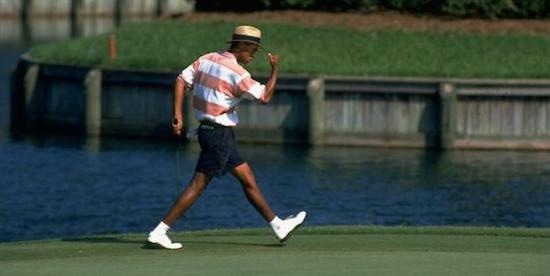
As Woods gets ready to celebrate his 49th birthday, we revisit the six finalists he beat in his USGA amateur triumphs
Tiger Woods spent the majority of his professional life overwhelming the golfing world with his prodigious length and masterful imagination. A 12-shot victory at The Masters and a 15-shot victory at the U.S. Open come to mind immediately. However, most would argue Tiger’s greatest strength has always been his mental game. His ruthless focus and never-say-die attitude are legendary.
A lot of his mental fortitude was forged in the fires of amateur golf. Tiger won six straight USGA national championships - three U.S. Junior Amateur Championships and three U.S. Amateur Championships. Each of them had their own bit of drama and showcased Tiger’s resolve and ability to intimidate opponents.
The six opponents he defeated all took different paths following their face-off with Woods. Each of them had victory in their grasp and Woods snatched it from each of them in his own ruthless way.
1991 U.S. Junior Amateur
Finals Opponent: Brad Zwetschke
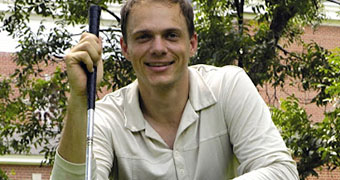
- Baptist Press photo
The final between Zwetschke and Woods was a close one, in fact, Zwetschke was the first opponent in the event to force Woods to play 18 holes. After jumping out to a 3-up lead after six holes, Zwetschke became the first in a line of opponents to be hunted down by the Big Cat. The match stretched into a playoff, and Tiger won on the 19th hole after Zwetschke missed a 4-foot par putt following a great shot from a greenside bunker.
Zwetschke’s success that week helped him realize he was good enough to compete with the best of his peers. A decorated high school golfer in Kankakee, Ill., Zwetschke chose North Carolina State over Arizona, Virginia, and Ohio State. However, after one year in Raleigh, he wasn’t as focused on golf as he should have been, so he transferred to the University of Illinois and then moved once more to Eastern Illinois.
Even with some struggles during his college career, Zwetschke gave professional golf a try in 1997 and headed for Orlando. It didn’t go well. It took an epiphany in 1999 during the Australian Tour Qualifying School to push Zwetschke in a new, vastly different direction. Eleven years after facing Tiger in the U.S. Junior Amateur Final at Arnold Palmer’s Bay Hill Club, Brad Zwetschke put down his golf clubs and turned to faith.
Zwetschke returned home and began training as a missionary. He ended up in New Orleans in 2005, when his home in the Ninth Ward was destroyed by Hurricane Katrina he relocated with his young family to Florida.
Zwetschke is now an army chaplain who has been deployed five times in the last 12 years to offer support to soldiers. He doesn’t play much golf anymore except for the odd scramble when his commander needs a ringer.
1992 U.S. Junior Amateur
Finals Opponent: Mark Wilson
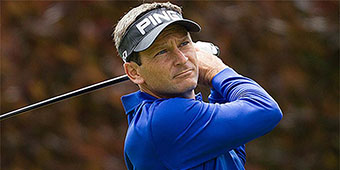
- UNC Athletics photo
Mark Wilson lost to Tiger Woods 1-down at Wollaston Country Club just outside Boston in 1992. His golf journey was far different from Brad Zwetschke’s. Wilson is a five-time PGA Tour winner who was ranked as high as 24th in the world in 2012 when he won the Humana Challenge and then a month later finished third in the WGC World Match-Play.
In the 1992 final, Wilson led Woods 2-up with five holes left to play. Wilson was the first opponent that week to hold a lead over Woods. However, in true Woods fashion, he won the 14th and 16th holes before winning the 18th with a bogey for his second straight U.S. Junior Amateur title.
Wilson went on to win the Ben Hogan Award as the best college player in 1996. In 2009, Wilson and Woods found themselves tied for the lead after two rounds of the BMW Championship at Cog Hill. Their third-round pairing was the first time the duo had been paired together since their 1992 battle at Wollaston.
1993 U.S. Junior Amateur
Finals Opponent: Ryan Armour
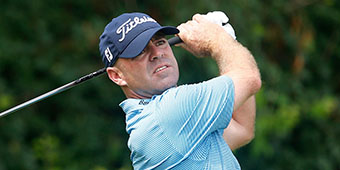
- PGA Tour photo
Ryan Armour arrived at the 1993 final with some bad memories. In the 1992 Junior Amateur, Armour faced Woods in the quarterfinal and was soundly defeated, 8 and 6.
A year later, things looked different. After winning the 15th and 16th holes, Armour stood on the 17th hole dormie, and it seemed the mighty Woods was finally going to run out of steam. Alas, in what was becoming part of the Woods’ legend, he birdied the final two holes, including a 10-footer on 18, to force a playoff. Woods parred the extra hole while a reeling Armour made bogey.
“The biggest heartbreak I’ve ever experienced,” Armour said. However, just like Mark Wilson, Armour continued to develop his skills. The Akron, Ohio native played collegiately at Ohio State before turning professional in 1999, going back and forth between the PGA Tour and the Korn Ferry Tour. In 2016, Armour won the Panama Claro Championship on the Korn Ferry Tour and a year later collected his first PGA Tour victory at The Sanderson. Armour is still on the PGA Tour and has amassed $7.1 million in career earnings. He can attribute those large purses to a guy he had 2-down at Waverly CC in Oregon in 1993.
1994 U.S. Amateur
Finals Opponent: Trip Kuehne
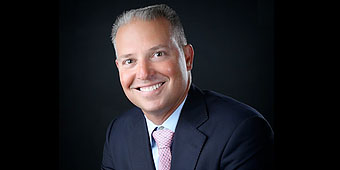
- Texas Golf Hall of Fame photo
The trend of Tiger’s comebacks continued in the 1994 U.S. Amateur at TPC Sawgrass, where Trip Kuehne led Woods by six holes following a morning round of 66. With 18 holes remaining in the 36 hole final, Woods had plenty of time to add to his growing legend. Woods won five of the final 10 holes and closed out the match on Sawgrass’ infamous par-3 17th hole, adding his signature fist bump in what many call a performance for the ages.
The loss, according to Kuehne was a “blessing in disguise,” as he realized that he didn’t have the singular drive to play professional golf. Even though he was a three-time All-American and 1995 Ben Hogan Award winner, he decided he was going to remain an amateur and compete in events while balancing a job in finance. He earned his MBA in 1997, the same year Tiger won his first Masters by 12 shots.
Kuehne’s amateur golf life is marked with success. He was a three-time Walker Cup player and qualified for four U.S. Opens and two Masters. He won low amateur honors in the 2003 US Open at Olympia Fields. His second Masters appearance in 2008 was earned following his US Mid Amateur victory in 2007.
1995 U.S. Amateur
Finals Opponent: Buddy Marucci
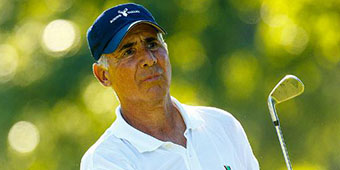
- USGA photo
The makeup of Tiger’s final two foes in his 1995 U.S. Amateur triumph at Newport Country Club is one that is no longer recognizable. The slightly ruffled Mark Plummer, Tiger’s semifinal opponent, graduated from college in 1975, the same year Tiger was born. Buddy Marucci reached the final as a 43-year-old.
Marucci pushed Tiger to the 36th hole, but an exquisite, cold-hearted 8-iron to inside two feet clinched a 2-up victory and Tiger’s second straight US Amateur.
“Obviously, I would have loved to have won, because winning the Amateur is the pinnacle of anyone’s career,” said Marucci, “But I probably got more out of losing than anybody’s ever gotten out of losing.”
Marucci might be right. His road to the final was unexpected, he had never made it past the second round of the US Amateur. However, his performance earned him a spot on the 1995 Walker Cup team. In 2007 Marucci captained the Walker Cup team at Royal Country Down. His team won 12.5 to 11.5. That performance earned him a return invite, and in 2009 he led the Walker Cup team at his home course of Merion. In 2008 Marucci finally captured a national championship when he won the U.S. Senior Amateur.
As a car dealer in the Philadelphia area, Marucci has done very well. He enjoyed amateur success and has played in 50 USGA events. His playing prowess even earned him a cup of coffee with the Fox Sports golf broadcast team.
1996 U.S. Amateur
Finals Opponent: Steve Scott
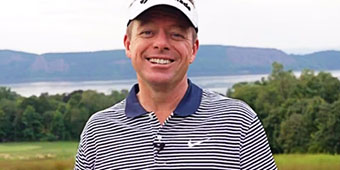
- Golfweek photo
Steve Scott was the final notch in Tiger Woods’ amateur belt. For many golf fans, this match is their first memory of Tiger Woods. He’s fist-pumping in his red shirt, making clutch putts, and finding a way to win at any cost.
Scott was a different type of opponent than Tiger’s 1995 opponent, Buddy Marucci. Scott was an All-American at the University of Florida, the 19-year-old had professional aspirations. Following a familiar script, Woods trailed early and after the first 18 holes, Scott held a 5-up lead over the wunderkind.
“Picture this. Tiger’s out there on the range with Butch Harmon, trying to figure something out, and Kristi and I went shopping.” Scott told writer Thomas Dunne. “We hadn’t gotten anything that week, so we headed to the merchandise tent. It was her idea, just to take my mind off the match.”
Scott said one of the moments that has stuck with him over the course of the last 25 years is the scene on the first hole.
"The fairway was lined with people at 7:15 in the morning. I knew it was going to be a different kind of day," Scott said.
Over the course of the round, Scott decided not to watch any of Woods' shots. Eight months prior to their US Am final, Scott played with Tiger and shot an 80. He spent the round in awe of Tiger's high towering shots; he was going to avoid that distraction this time. However, while it's easy not to watch Tiger swing, it's nearly impossible to avoid the sound he makes.
"I couldn't not hear the sound of the strike. It was unlike any other sound. Tiger was so far and away the best player out there," Scott said.
Perhaps a forgotten anecdote to this epic final occurred on the 34th hole of the match. Scott was 2-up, and Tiger was putting out to extend the match. However, Woods had moved his marker because it was in Scott’s putting line. As Tiger lined up his putt, Scott reminded Tiger to move it back.
Since then, Tiger has admitted he had forgotten about his marker; if Woods had played his ball from the wrong spot, Scott would have won the hole and the U.S. Amateur. Instead, Tiger moved his ball back, made the putt, and roared back to win on the 38th hole.
This final comeback was a fitting way to end Woods’ historic amateur run. The next day, Woods turned pro.
Over the years, Scott has been praised for his sportsmanship in that moment, but he doesn't think much of it. He believes it was the right thing to do.
"Playing with integrity is the first rule of golf," Scott said. "I treated that moment like I would have a Saturday afternoon match with my buddies. It was the right thing to do."
Scott’s life, like many who end up in Woods’ wake, changed that day. He remained an amateur for a few more years, reaching the WAGR number 1 ranking in 1999. He won the Western Amateur in both stroke play and match play and earned spots on the 1997 and 1999 Walker Cup teams. He also found some early success as a professional, winning the 2001 Vancouver Open on the Canadian Tour and the 2002 Texas Classic.
More recently, Scott won the 2018 Carolinas PGA Section and was named the 2018 Carolinas PGA Player of the Year, and he is the PGA Head Golf Professional of The Outpost Club and Founder of the Silver Club Golfing Society.
As he reflects on that week at Pumpkin Ridge in 1996, Scott knows that he continues to draw from his success and battle with Woods to this day.
"I played some of my best golf in moments when I was under the most pressure in an extremely tough situation," Scott said.
In June, he released a book that he wrote with Tripp Bowden titled, Hey Tiger - You Need to Move Your Mark Back. You can find it at Scott’s website, Movethatback.com.
It seems unlikely anyone will approach, match, or break the run of success Tiger enjoyed as an amateur from 1991-96. Like any incredible sports streak, there are bits of luck behind every victory. To think that Tiger trailed in every match on the back nine is staggering and that he trailed after 18 holes to Trip Kuehne by six holes and to Steve Scott by five holes is nearly inconceivable. Tiger Woods defeated six exceptional opponents in those six finals. Four were future professionals and the other two became the best life-long amateurs of their respective generations.
Related: 5 amateur records that will never be broken (and 5 that might be)
Tiger’s big comebacks didn’t end when he said “Hello, World” and joined the professional ranks. While he’s known as a frontrunner, it’s hard to ignore his 8-stroke come-from-behind win over Els at the 1998 Johnnie Walker Classic and his miraculous 5-stroke final round comeback over Matt Gogel at the 2000 AT&T. Toss in his 2019 victory at The Masters, and Tiger still, 31 years later, has a flair for the dramatic.
A lot of his mental fortitude was forged in the fires of amateur golf. Tiger won six straight USGA national championships - three U.S. Junior Amateur Championships and three U.S. Amateur Championships. Each of them had their own bit of drama and showcased Tiger’s resolve and ability to intimidate opponents.
1991 U.S. Junior Amateur
Finals Opponent: Brad Zwetschke

- Baptist Press photo
Zwetschke’s success that week helped him realize he was good enough to compete with the best of his peers. A decorated high school golfer in Kankakee, Ill., Zwetschke chose North Carolina State over Arizona, Virginia, and Ohio State. However, after one year in Raleigh, he wasn’t as focused on golf as he should have been, so he transferred to the University of Illinois and then moved once more to Eastern Illinois.
Even with some struggles during his college career, Zwetschke gave professional golf a try in 1997 and headed for Orlando. It didn’t go well. It took an epiphany in 1999 during the Australian Tour Qualifying School to push Zwetschke in a new, vastly different direction. Eleven years after facing Tiger in the U.S. Junior Amateur Final at Arnold Palmer’s Bay Hill Club, Brad Zwetschke put down his golf clubs and turned to faith.
Zwetschke returned home and began training as a missionary. He ended up in New Orleans in 2005, when his home in the Ninth Ward was destroyed by Hurricane Katrina he relocated with his young family to Florida.
Zwetschke is now an army chaplain who has been deployed five times in the last 12 years to offer support to soldiers. He doesn’t play much golf anymore except for the odd scramble when his commander needs a ringer.
Finals Opponent: Mark Wilson

- UNC Athletics photo
In the 1992 final, Wilson led Woods 2-up with five holes left to play. Wilson was the first opponent that week to hold a lead over Woods. However, in true Woods fashion, he won the 14th and 16th holes before winning the 18th with a bogey for his second straight U.S. Junior Amateur title.
Wilson went on to win the Ben Hogan Award as the best college player in 1996. In 2009, Wilson and Woods found themselves tied for the lead after two rounds of the BMW Championship at Cog Hill. Their third-round pairing was the first time the duo had been paired together since their 1992 battle at Wollaston.
1993 U.S. Junior Amateur
Finals Opponent: Ryan Armour

- PGA Tour photo
A year later, things looked different. After winning the 15th and 16th holes, Armour stood on the 17th hole dormie, and it seemed the mighty Woods was finally going to run out of steam. Alas, in what was becoming part of the Woods’ legend, he birdied the final two holes, including a 10-footer on 18, to force a playoff. Woods parred the extra hole while a reeling Armour made bogey.
“The biggest heartbreak I’ve ever experienced,” Armour said. However, just like Mark Wilson, Armour continued to develop his skills. The Akron, Ohio native played collegiately at Ohio State before turning professional in 1999, going back and forth between the PGA Tour and the Korn Ferry Tour. In 2016, Armour won the Panama Claro Championship on the Korn Ferry Tour and a year later collected his first PGA Tour victory at The Sanderson. Armour is still on the PGA Tour and has amassed $7.1 million in career earnings. He can attribute those large purses to a guy he had 2-down at Waverly CC in Oregon in 1993.
1994 U.S. Amateur
Finals Opponent: Trip Kuehne

- Texas Golf Hall of Fame photo
The loss, according to Kuehne was a “blessing in disguise,” as he realized that he didn’t have the singular drive to play professional golf. Even though he was a three-time All-American and 1995 Ben Hogan Award winner, he decided he was going to remain an amateur and compete in events while balancing a job in finance. He earned his MBA in 1997, the same year Tiger won his first Masters by 12 shots.
Kuehne’s amateur golf life is marked with success. He was a three-time Walker Cup player and qualified for four U.S. Opens and two Masters. He won low amateur honors in the 2003 US Open at Olympia Fields. His second Masters appearance in 2008 was earned following his US Mid Amateur victory in 2007.
1995 U.S. Amateur
Finals Opponent: Buddy Marucci

- USGA photo
Marucci pushed Tiger to the 36th hole, but an exquisite, cold-hearted 8-iron to inside two feet clinched a 2-up victory and Tiger’s second straight US Amateur.
“Obviously, I would have loved to have won, because winning the Amateur is the pinnacle of anyone’s career,” said Marucci, “But I probably got more out of losing than anybody’s ever gotten out of losing.”
Marucci might be right. His road to the final was unexpected, he had never made it past the second round of the US Amateur. However, his performance earned him a spot on the 1995 Walker Cup team. In 2007 Marucci captained the Walker Cup team at Royal Country Down. His team won 12.5 to 11.5. That performance earned him a return invite, and in 2009 he led the Walker Cup team at his home course of Merion. In 2008 Marucci finally captured a national championship when he won the U.S. Senior Amateur.
As a car dealer in the Philadelphia area, Marucci has done very well. He enjoyed amateur success and has played in 50 USGA events. His playing prowess even earned him a cup of coffee with the Fox Sports golf broadcast team.
1996 U.S. Amateur
Finals Opponent: Steve Scott

- Golfweek photo
Scott was a different type of opponent than Tiger’s 1995 opponent, Buddy Marucci. Scott was an All-American at the University of Florida, the 19-year-old had professional aspirations. Following a familiar script, Woods trailed early and after the first 18 holes, Scott held a 5-up lead over the wunderkind.
“Picture this. Tiger’s out there on the range with Butch Harmon, trying to figure something out, and Kristi and I went shopping.” Scott told writer Thomas Dunne. “We hadn’t gotten anything that week, so we headed to the merchandise tent. It was her idea, just to take my mind off the match.”
Scott said one of the moments that has stuck with him over the course of the last 25 years is the scene on the first hole.
"The fairway was lined with people at 7:15 in the morning. I knew it was going to be a different kind of day," Scott said.
Over the course of the round, Scott decided not to watch any of Woods' shots. Eight months prior to their US Am final, Scott played with Tiger and shot an 80. He spent the round in awe of Tiger's high towering shots; he was going to avoid that distraction this time. However, while it's easy not to watch Tiger swing, it's nearly impossible to avoid the sound he makes.
"I couldn't not hear the sound of the strike. It was unlike any other sound. Tiger was so far and away the best player out there," Scott said.
Perhaps a forgotten anecdote to this epic final occurred on the 34th hole of the match. Scott was 2-up, and Tiger was putting out to extend the match. However, Woods had moved his marker because it was in Scott’s putting line. As Tiger lined up his putt, Scott reminded Tiger to move it back.
Since then, Tiger has admitted he had forgotten about his marker; if Woods had played his ball from the wrong spot, Scott would have won the hole and the U.S. Amateur. Instead, Tiger moved his ball back, made the putt, and roared back to win on the 38th hole.
This final comeback was a fitting way to end Woods’ historic amateur run. The next day, Woods turned pro.
Over the years, Scott has been praised for his sportsmanship in that moment, but he doesn't think much of it. He believes it was the right thing to do.
"Playing with integrity is the first rule of golf," Scott said. "I treated that moment like I would have a Saturday afternoon match with my buddies. It was the right thing to do."
Scott’s life, like many who end up in Woods’ wake, changed that day. He remained an amateur for a few more years, reaching the WAGR number 1 ranking in 1999. He won the Western Amateur in both stroke play and match play and earned spots on the 1997 and 1999 Walker Cup teams. He also found some early success as a professional, winning the 2001 Vancouver Open on the Canadian Tour and the 2002 Texas Classic.
More recently, Scott won the 2018 Carolinas PGA Section and was named the 2018 Carolinas PGA Player of the Year, and he is the PGA Head Golf Professional of The Outpost Club and Founder of the Silver Club Golfing Society.
As he reflects on that week at Pumpkin Ridge in 1996, Scott knows that he continues to draw from his success and battle with Woods to this day.
"I played some of my best golf in moments when I was under the most pressure in an extremely tough situation," Scott said.
In June, he released a book that he wrote with Tripp Bowden titled, Hey Tiger - You Need to Move Your Mark Back. You can find it at Scott’s website, Movethatback.com.
It seems unlikely anyone will approach, match, or break the run of success Tiger enjoyed as an amateur from 1991-96. Like any incredible sports streak, there are bits of luck behind every victory. To think that Tiger trailed in every match on the back nine is staggering and that he trailed after 18 holes to Trip Kuehne by six holes and to Steve Scott by five holes is nearly inconceivable. Tiger Woods defeated six exceptional opponents in those six finals. Four were future professionals and the other two became the best life-long amateurs of their respective generations.
Related: 5 amateur records that will never be broken (and 5 that might be)
Tiger’s big comebacks didn’t end when he said “Hello, World” and joined the professional ranks. While he’s known as a frontrunner, it’s hard to ignore his 8-stroke come-from-behind win over Els at the 1998 Johnnie Walker Classic and his miraculous 5-stroke final round comeback over Matt Gogel at the 2000 AT&T. Toss in his 2019 victory at The Masters, and Tiger still, 31 years later, has a flair for the dramatic.
Most Popular Articles
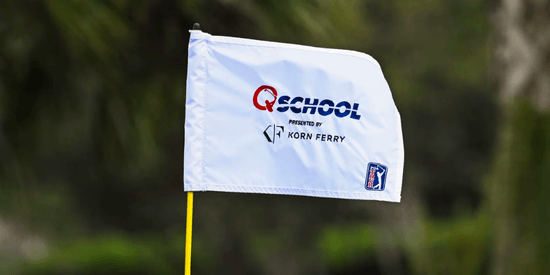
2025 PGA TOUR Q-School Guide: Sites, Scores, and Who Advanced
Dec 5, 2025Second Stage is complete and Final Stage awaits at Sawgrass — follow every Q-School leaderboard and the players still chasing
2025 LPGA TOUR Q-Series: Final Qualifying Stage FINAL SCORING
Dec 8, 2025Helen Briem earns medalist honors, 31 players headed to the LPGA next year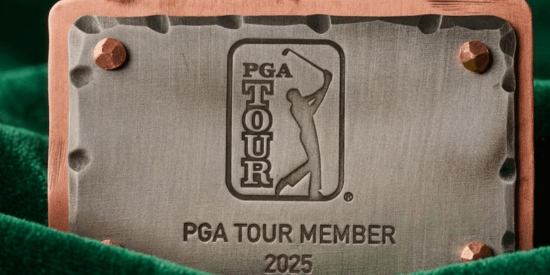
2025 PGA TOUR Q-School Final Stage: Ewart Leads Five New TOUR Card Winners
Dec 14, 2025A.J. Ewart topped Final Stage at TPC Sawgrass, leading five players who secured PGA TOUR membership for 2026.
Australian Open at Royal Melbourne: Preview, amateur bios, and how to watch
Nov 30, 2025Rory McIlroy headlines one of the championship's top fields in years - at least four amateurs will have their chance at gloryInside Gil Hanse’s Restoration of Baltusrol’s Upper Course: A Return to Tillinghast’s
Dec 11, 2025Renowned architect Gil Hanse reveals how he brought Baltusrol’s Upper Course back to life by honoring A.W. Tillinghast’s originalLoading latest news...
